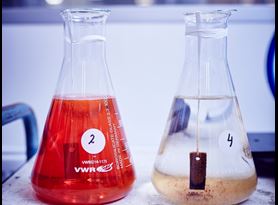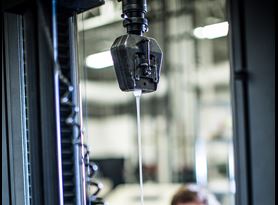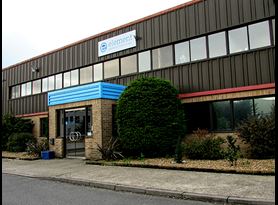Liquid and gas permeation testing is often performed on polymers, seals, and other susceptible materials used in the oil and gas sector. Element’s services are designed to ensure the safety and longevity of these materials by measuring permeation coefficient (permeability), diffusion coefficient (diffusivity), and solubility coefficient.
During liquid or gas permeation testing, polymers can be tested at pressures up to 10,000 psi (690 bar) and temperatures from 20 to +250 ° C, measuring permeability characteristics of deep well components (seals, pressure barriers, liners, etc.), fuel system components, hydrogen storage tanks, and chemical processing infrastructure.
Gas Permeation
Gas permeation testing uses sweet and sour gases to evaluate coupon samples, hoses, tubes, pipes, o-rings, and sealing elements. We provide testing at temperatures from -20 to 250 °C and at pressures up to 690 bar. We commonly test a variety of industry-recognized standards, including API 17 J, ASTM D1434, ISO 2556, and ISO 4080. Additionally, our experts can create customized permeation tests for O-rings and sealing elements. Some of the gases we can test include Carbon dioxide (CO2), Methane (CH4), Ethane (C2H6), Nitrogen (N2), and Hydrogen Sulphide (H2S).
Hydrogen Permeation
Element has 30 years of experience in testing materials for the oil and gas industry and is now sharing its expertise with other industries looking towards utilizing hydrogen (H2). Permeation testing on H2 can provide important knowledge about how much is going to pass through materials, whether decompression cycles are going to compromise structural integrity, and how non-metallic materials behave in the long term. Element commonly tests to a variety of industry-recognized standards, including ASTM D1434, ISO 2782-1, ISO 23936, ISO 23936, and NORSOK M-710. Additionally, our experts conduct testing according to many NACE and API-relevant standards. We can also integrate several polymer testing methods into a single test program.
Liquid Permeation
Element conducts liquid permeation testing with a range of fluids, including water, oil, solvent, brines, and alcohol mixtures. Liquid permeation testing for hoses, tubes, and pipes can be performed up to 130 °C, and at vapor pressures described in ISO 8308. Custom permeation testing is also available for hoses under pressure up to 300 bar. For rubber sheets and flat components, we can reach temperatures of 200 °C using the cup weight-loss method according to SAE J2665, ASTM E96, ASTM D814, ISO 6179 (BS 903-A46), and ISO 2528.
Functional Tests
Functional and linear permeation tests on o-rings, sealing elements, and pipes are available for both sweet and sour gases and mixtures. Our permeation testing labs can test at temperatures of up to 220 °C and pressure of 690 bar according to API 6A, ISO10423-4, API 17D, as well as client specified conditions.
Liquid Saturation
Element offers tests characterizing the time required to reach saturation under exposure to a range of liquids at vapor pressure. Mixtures of liquid and gases (up to 1400 bar) are available up to temperatures of 250 °C. Measurements of mass and volume relative to exposure time are taken according to ASTM D570.
Additional Liquid and Gas Permeation Services
Our test capabilities include hydrogen, sweet and sour gas permeation testing, as well as liquid permeation testing and analysis of permeated gases and mixtures. For projects with more challenging requirements, our labs can use finite elemental analysis (FEA) and Computational Fluid Dynamics (CFD) to model fluid passage through more complex shapes and components.
In addition to well-established industry standards, we can work with you to design and implement custom test plans, often integrating several polymer testing methods into a single test program. For more information about our service, or to request a quote, contact us today.
Related Services

Oil & Gas
Element's global platform of laboratories offers advanced services designed to test and qualify materials intended for use within the environments of the future.

Corrosion Testing Services
Find out about Elements extensive corrosion testing expertise in the Energy industry across a global network of laboratories.

Polymer Failure Analysis
Element experts are here to help you with your failure analysis on plastics, composites, rubbers, adhesives, sealants, paints and coatings.

Element Hitchin
As Element's Global Center of Technical Excellence for Polymers, Element Hitchin has decades of experience providing a comprehensive range of highly specialized services.

